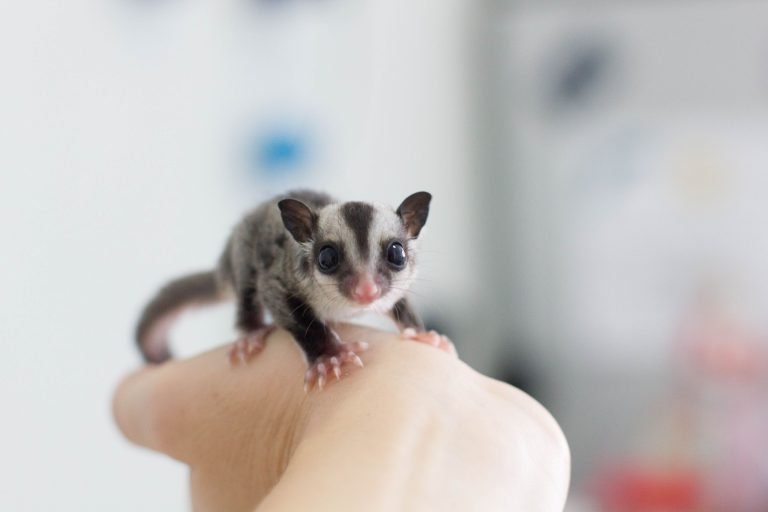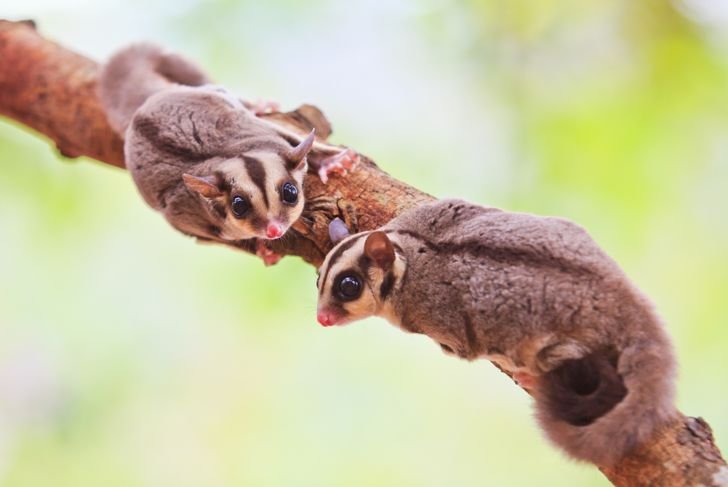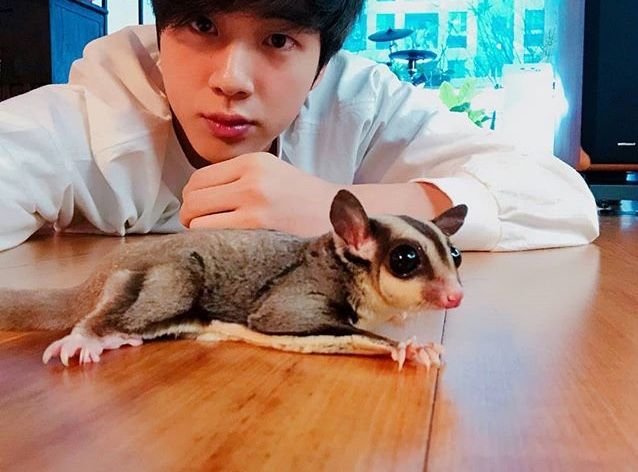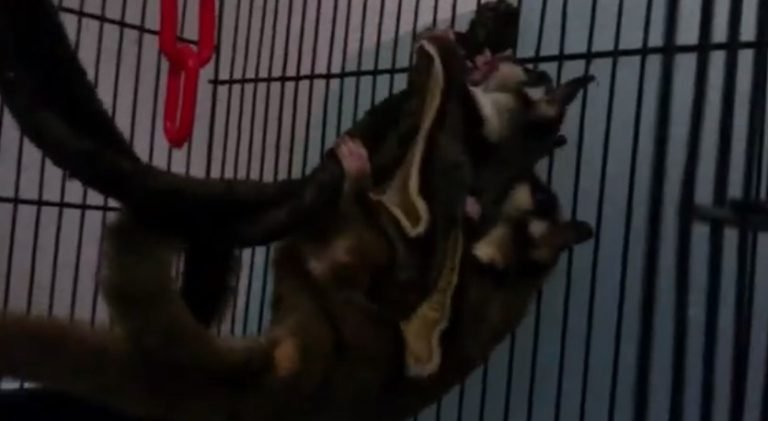Can Sugar Gliders Live Alone
Did you know that sugar gliders are social animals that naturally live in groups? It’s true! These adorable creatures thrive in the company of their fellow gliders. But what about living alone? This is a common concern among owners, and understanding the social nature of sugar gliders is crucial for their well-being.
Providing proper care means recognizing that sugar gliders need companionship to lead happy lives. They rely on social interactions for mental stimulation, grooming, and even warmth. Without these vital connections, they may become lonely or stressed.
So, if you’re considering getting a sugar glider as a pet, remember: they’re happiest when surrounded by friends. Don’t let them suffer from isolation; consider providing them with the companionship they crave.
The Importance of Companionship for Sugar Gliders
Companionship is crucial for the well-being and happiness of sugar gliders. These adorable creatures thrive when they have a companion by their side, providing them with comfort and support.
In the wild, sugar gliders form strong bonds and rely on each other for various activities. They huddle together for warmth, groom each other’s fur, and even share food sources. This social interaction is essential for their survival and overall mental health.
When sugar gliders are kept alone without a companion, they can experience behavioral issues and stress. Solitary gliders often display signs of loneliness, such as excessive vocalization or self-mutilation. They may become more timid or aggressive due to the lack of social interaction that they would typically have in the wild.
To ensure the well-being of your sugar glider, it is highly recommended to provide them with a companion. Having another glider as a friend will give them a sense of security and emotional support. Here are some options to consider:
- Pairing up two sugar gliders of the same sex: This is an ideal choice if you want to avoid breeding.
- Introducing a neutered male to a female: If you wish to have both genders together without worrying about reproduction.
- Bonding two young sugar gliders: This allows them to grow up together and develop a strong bond from an early age.
By providing your sugar glider with a companion, you are enriching their lives and promoting their overall well-being. Remember that these delightful creatures need social interaction just like humans do. So, make sure your furry friend has another glider by their side to keep them happy and content.
Effects of loneliness on the health of sugar gliders
Loneliness can have detrimental effects on the physical and mental health of sugar gliders. When sugar gliders are forced to live alone without companions, they may experience depression, anxiety, and a decreased lifespan.
The impact of loneliness on sugar gliders is significant. Without social interaction, these animals can become stressed and exhibit signs of distress. They may engage in self-destructive behaviors such as excessive grooming or overeating, which can lead to obesity and other health issues.
Solitary sugar gliders may develop aggressive tendencies. The lack of socialization can make them more prone to territorial behavior and aggression towards humans or other animals. This not only poses a risk to their own well-being but also to those around them.
To ensure the optimal health and happiness of sugar gliders, it is crucial to provide them with suitable companionship. Sugar gliders are highly social creatures that thrive in groups or pairs. Having a companion allows them to engage in natural behaviors like grooming each other, playing together, and providing emotional support.
Managing a busy schedule while caring for a sugar glider

Caring for a sugar glider can be a rewarding experience, but it does require careful planning and commitment, especially when you have a busy schedule. Here are some key points to consider:
- Balancing your time: Even with limited availability, it’s crucial to provide your sugar glider with enough attention and interaction. While you may not be able to spend as much time as you would like, try to dedicate specific hours or days for bonding and play.
- Enriching their environment: To alleviate boredom during long periods of absence, consider enriching their living space with toys, climbing structures, and puzzles. These additions can provide mental stimulation and entertainment while you’re away.
- Seeking professional advice: Regular visits to a veterinarian who specializes in sugar gliders’ care are essential. They can guide you on proper husbandry practices and offer specific recommendations based on your sugar glider’s needs.
- Travel pouch: When you need to travel or go about your daily activities, using a travel pouch designed for sugar gliders can keep them close to you while providing comfort and security. This way, they can still feel connected even when you’re on the move.
Managing a busy schedule while caring for a sugar glider requires effort and dedication. By finding ways to balance your time, enrich their environment, seek professional advice when needed, and utilize tools like travel pouches, you can ensure that your sugar glider receives the care they deserve despite your hectic lifestyle.
How long can you leave a sugar glider alone?
Leaving a sugar glider alone for extended periods is not recommended as it can have a negative impact on their well-being. These adorable creatures thrive on social interaction and companionship. Here’s what you need to know about leaving them alone:
Sugar Gliders and Social Interaction
Ideally, sugar gliders should have daily interaction with their owner or another compatible companion. This helps fulfill their social needs and prevents feelings of loneliness. When left alone for prolonged periods, they may become stressed, anxious, or even depressed.
Short Durations Alone
While it’s best to avoid leaving sugar gliders alone for long stretches of time, occasional short durations may be manageable if unavoidable circumstances arise. For example, leaving them alone for a few hours while running errands or attending appointments might be acceptable.
To ensure the well-being of your sugar glider during these brief periods of solitude, consider the following:
- Provide plenty of mental stimulation by leaving toys or puzzles in their enclosure.
- Make sure they have access to fresh food and water before you leave.
- Create a comfortable environment by maintaining suitable temperature and humidity levels.
- Ensure their enclosure is secure and free from any potential hazards.
Remember that each sugar glider is unique, so it’s important to observe their behavior and adjust accordingly. If you notice signs of distress or changes in their eating habits or activity levels when left alone, it may be necessary to find alternative solutions such as arranging for a pet sitter or considering getting them a compatible companion.
Tips for keeping a single sugar glider happy
If you’ve decided to have just one pet sugar glider, there are a few things you can do to ensure they stay happy and content. Here are some tips to consider:
- Give them extra attention: Since sugar gliders are social animals, it’s important to compensate for the lack of companionship by providing additional attention. Spend quality time with your glider, interact with them, and make them feel loved.
- Engage in interactive play sessions: To stimulate their natural instincts and prevent boredom, engage in regular interactive play sessions with your sugar glider. This could involve playing games like hide-and-seek or using toys that encourage physical activity.
- Introduce a bonding pouch or stuffed animal: While it may not replace the presence of another sugar glider entirely, introducing a bonding pouch or stuffed animal can provide some comfort and simulate the feeling of companionship. Your glider can snuggle up to it when they need some extra warmth and security.
By following these tips, you can help ensure that your single pet sugar glider remains happy and fulfilled despite being alone. Remember that each glider is unique, so it’s essential to observe their behavior closely and make adjustments accordingly.
Now that you’re equipped with these suggestions, go ahead and create an enriching environment for your beloved pet!
Final Verdict
In conclusion, sugar gliders are highly social animals that thrive in the company of their own kind. Companionship is vital for their overall well-being and mental health. Loneliness can have detrimental effects on sugar gliders, leading to stress, depression, and even physical ailments.
If you’re considering getting a sugar glider as a pet, it’s important to understand the commitment involved in providing them with the social interaction they need. Despite having a busy schedule, it’s crucial to make time for your furry friend and ensure they receive adequate attention and playtime.
Leaving a sugar glider alone for extended periods is not recommended as they require daily interaction and stimulation. It’s best to arrange for someone trustworthy to care for your sugar glider if you need to be away for an extended period.
If you decide to keep a single sugar glider due to various reasons such as limited space or resources, there are still ways to keep them happy. Providing plenty of toys, creating an enriching environment, and dedicating quality time with your pet can help alleviate some of the loneliness they may experience.
Remember that owning a sugar glider requires responsibility and commitment. Researching their needs thoroughly before bringing one into your home is essential. Consulting with experienced owners or seeking guidance from reputable sources will ensure you provide the best possible care for your sugar glider.
FAQs
1.Can I keep my sugar glider alone?
While it is possible to keep a single sugar glider, it is not ideal for their well-being. Sugar gliders are highly social animals and thrive in the company of other gliders.
2.How long can I leave my sugar glider alone?
Sugar gliders should not be left alone for extended periods as they require daily interaction and stimulation. If you need to be away, it’s best to arrange for someone trustworthy to care for them.
3.What happens if my sugar glider is lonely?
Loneliness can have detrimental effects on sugar gliders, leading to stress, depression, and even physical ailments. It’s important to provide them with companionship or find ways to alleviate their loneliness.
4.What can I do to keep a single sugar glider happy?
To keep a single sugar glider happy, provide plenty of toys, create an enriching environment, and dedicate quality time for interaction and play.
5.Are there any alternatives to keeping a single sugar glider?
If you are unable to house multiple sugar gliders, consider adopting one that already has a companion or connecting with local sugar glider communities for playdates and socialization opportunities.







